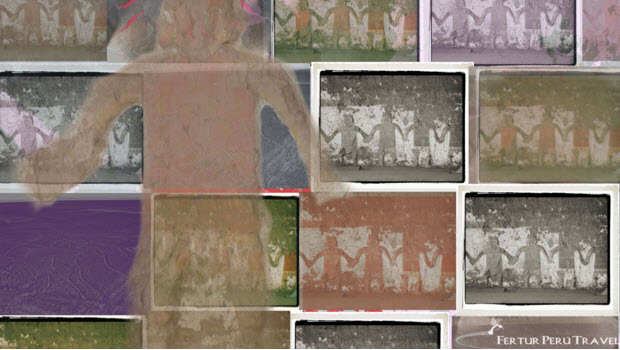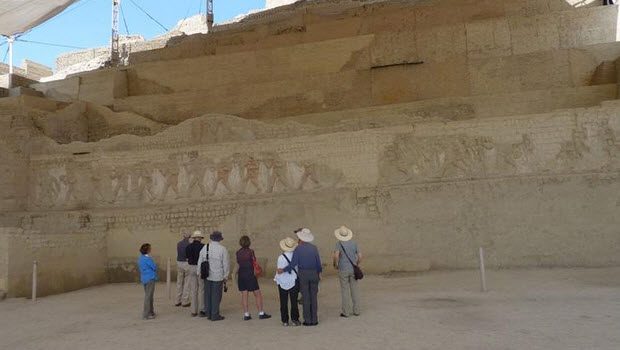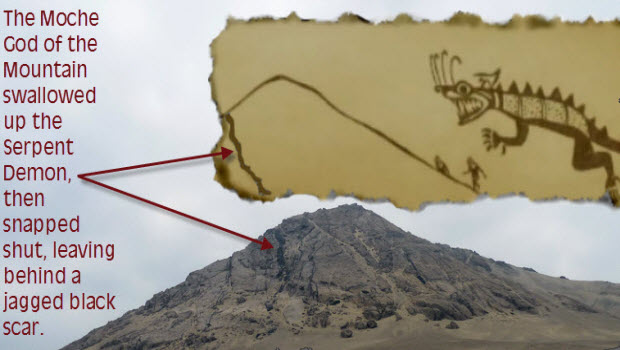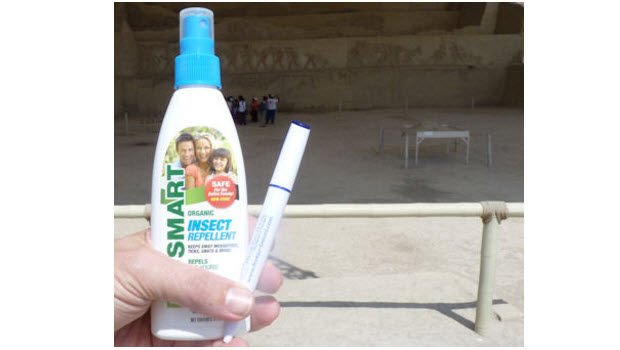Trujillo
Blood, Sand and Sacrifice; Moche Archaeological Journey:
Climate Change History
For nearly 500 years, the Moche culture dominated more than 300 miles of Peru’s northern coast, extending inland from the Pacific Ocean to the high western slopes of the Andes.
The creation legend of the Moche Temple of the Moon
The Huaca de la Luna (Temple of the Moon) is the largest Moche archaeological complex, and one of the most impressive ruins to visit in Peru, on par with Machu Picchu or Kuelap or Chan Chan.
Organic EcoSMART insect repellent stands up to toughest Mochica mosquitos
I took an incredible four-day archaeological journey along the Moche highway: Chiclayo, Túcume (and the recently opened Huaca Las Balsas), San Jose de Moro, El Brujo and the Museo Cao, Trujillo, Huanchaco and Huaca de la Luna.
When the rains come early to Cusco, consider the Moche Trail alternative
The weather in Cusco has been predictably unpredictable with the rainy season starting a month earlier than usual. Last week there was significant flooding in the town of Urubamba in the Sacred Valley. A recommendation for anyone interested in coming to Peru in the next couple of months: The northern coast.
You would want to take plenty of sunscreen, a hat and insect repellent, since there are mosquitoes — but the summer season has barely begun, so the bugs shouldn't be too bad.
 The pace is less frenetic and much less touristy than Cusco. You can pick and choose any number of destinations, from amazingly beautiful nature reserves to the most active — and arguably the most significant — treasure trove of active archaeological discovery occurring right now in Peru.
There's Tumbes National Mangrove Sanctuary, the Cerros de Amotape National Park and the Tumbes Reserved Zone, with protected wildlife; to quote our friends at PromPeru, near Piura are the Colan beach resort, the town of Catacaos known for its arts and crafts and gold and silver jewelry, and the town of Chulucanas, famous for its pottery.
The pace is less frenetic and much less touristy than Cusco. You can pick and choose any number of destinations, from amazingly beautiful nature reserves to the most active — and arguably the most significant — treasure trove of active archaeological discovery occurring right now in Peru.
There's Tumbes National Mangrove Sanctuary, the Cerros de Amotape National Park and the Tumbes Reserved Zone, with protected wildlife; to quote our friends at PromPeru, near Piura are the Colan beach resort, the town of Catacaos known for its arts and crafts and gold and silver jewelry, and the town of Chulucanas, famous for its pottery.
 The pace is less frenetic and much less touristy than Cusco. You can pick and choose any number of destinations, from amazingly beautiful nature reserves to the most active — and arguably the most significant — treasure trove of active archaeological discovery occurring right now in Peru.
There's Tumbes National Mangrove Sanctuary, the Cerros de Amotape National Park and the Tumbes Reserved Zone, with protected wildlife; to quote our friends at PromPeru, near Piura are the Colan beach resort, the town of Catacaos known for its arts and crafts and gold and silver jewelry, and the town of Chulucanas, famous for its pottery.
The pace is less frenetic and much less touristy than Cusco. You can pick and choose any number of destinations, from amazingly beautiful nature reserves to the most active — and arguably the most significant — treasure trove of active archaeological discovery occurring right now in Peru.
There's Tumbes National Mangrove Sanctuary, the Cerros de Amotape National Park and the Tumbes Reserved Zone, with protected wildlife; to quote our friends at PromPeru, near Piura are the Colan beach resort, the town of Catacaos known for its arts and crafts and gold and silver jewelry, and the town of Chulucanas, famous for its pottery.


